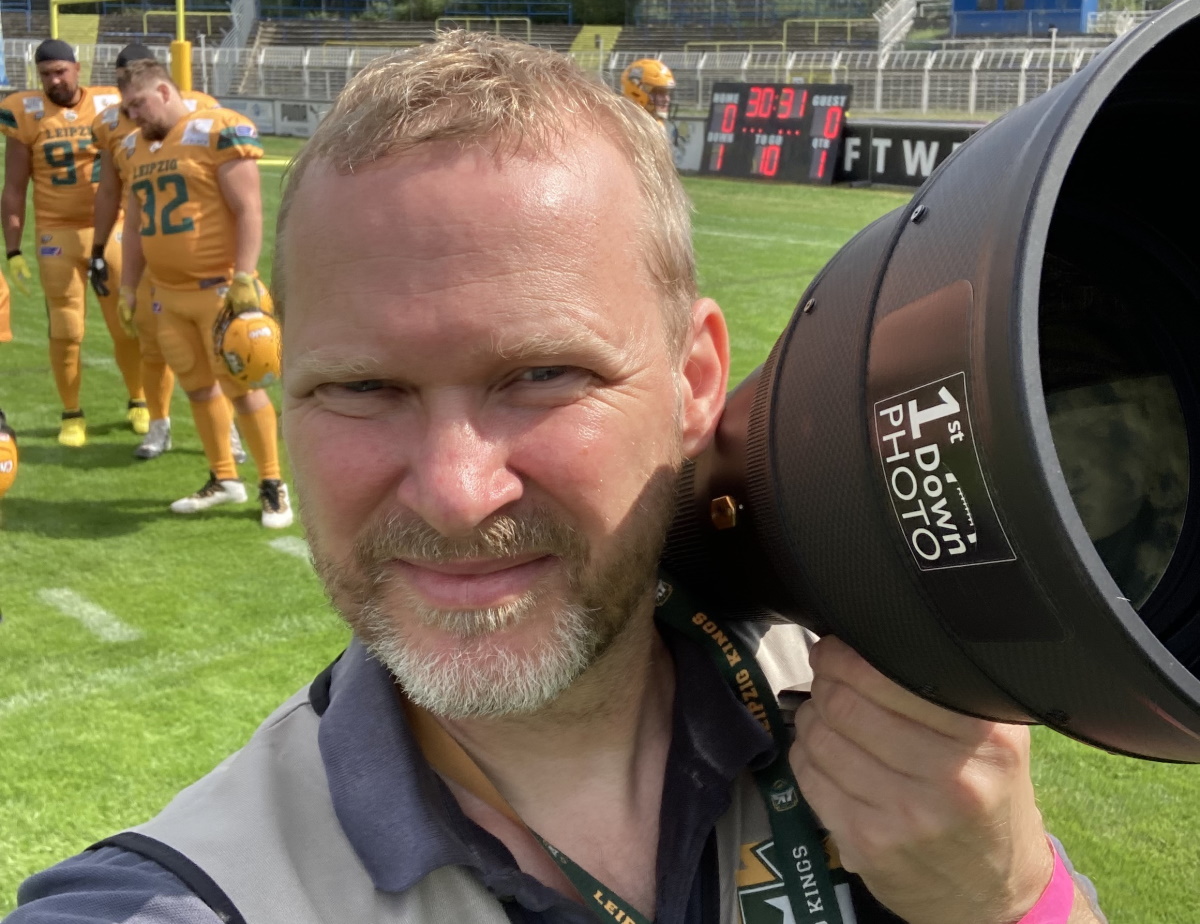Denmark’s Mikkel Bo Rasmussen setting a standard for football photography
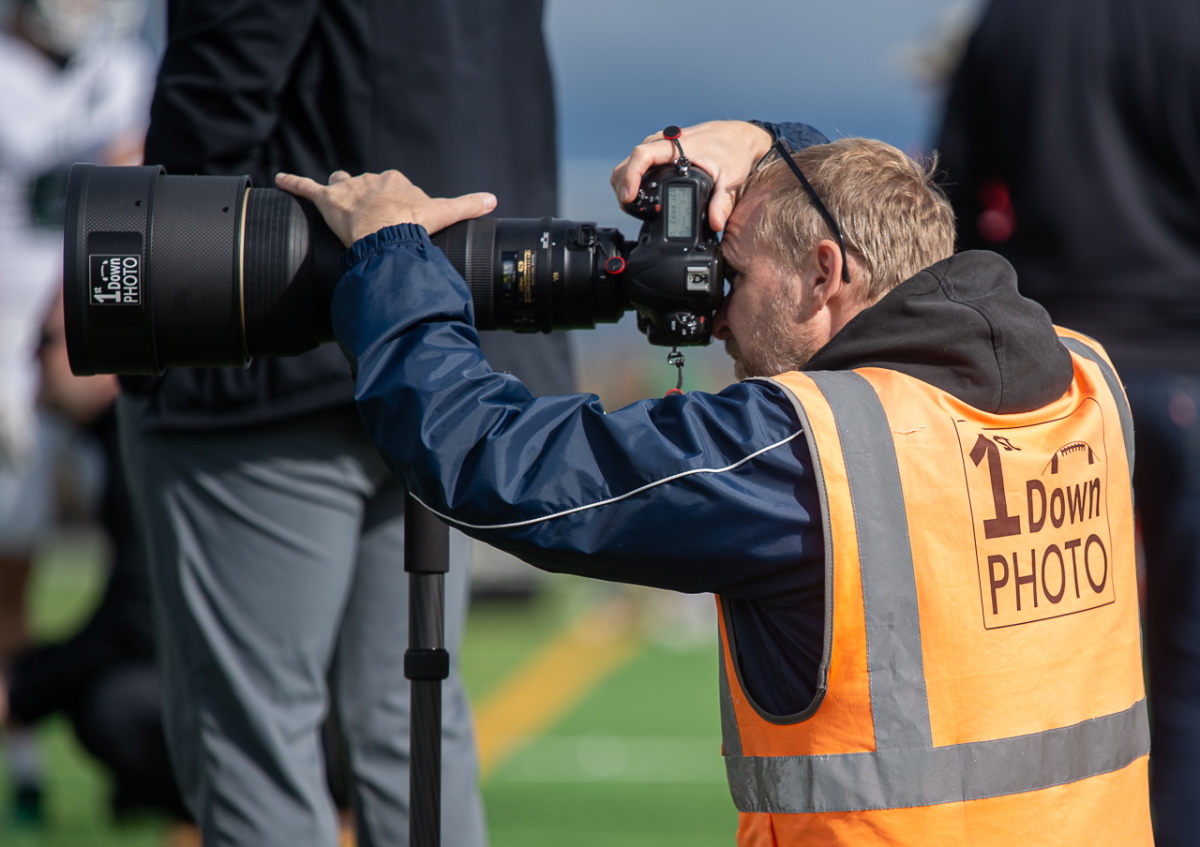
Denmark’s championship game, the Mermaid Bowl, kicks off this weekend as the Copenhagen Towers and Søllerød Gold Diggers face each other for the second straight year to decide the title.
And who better to be on the sideline recording another slice of football history in this Scandinavian country than Mikkel Bo Rasmussen, aka 1st Down Photography?
Since 2015, Rasmussen’s photographs have been instrumental in helping to tell the story of the growth of football in Denmark and also in Europe. His images have graced articles appearing on websites throughout Europe and the world including American Football International.
When you’re reading about Mermaid Bowl XXXIII, take the extra time to check out the photo credit. More often than not, it’ll be 1st Down Photography.
In this interview, Rasmussen has given us a fascinating insight into what goes into the job of a sports photographer.
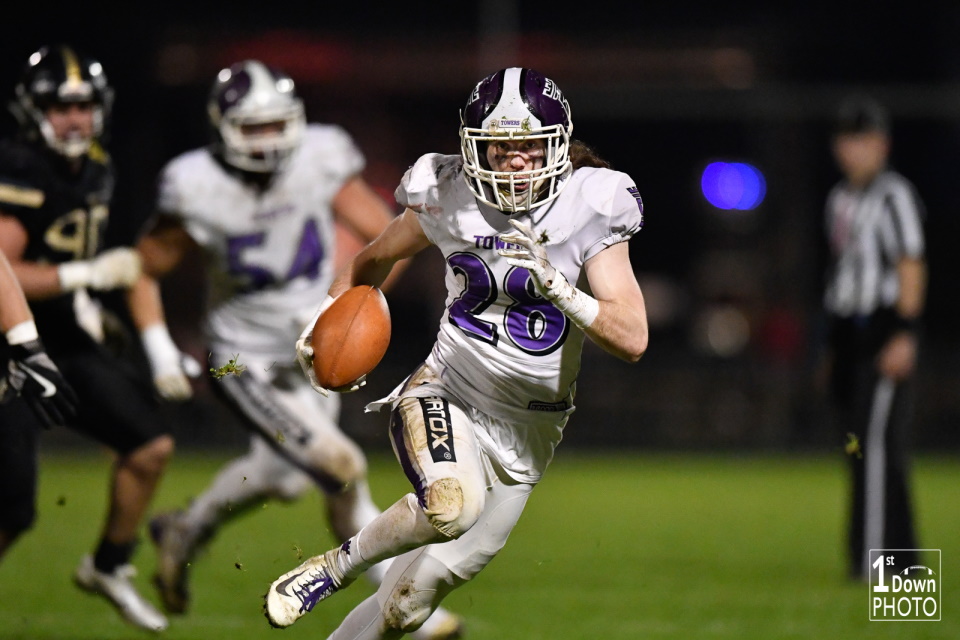
Copenhagen Towers running back Anton Witmeur (28) runs the football during Mermaid Bowl XXXII (2021-10-09). Vejle Atletikstadion, Vejle, Denmark, October 9, 2021. Photo by Mikkel Bo Rasmussen / 1st Down Photo (@1stdownphoto)
AFI: How did you get into photography?
MBR: As a child I was always the one taking pictures on family trips. I didn’t think much of photography at the time, but I must have had it in me for a long time. However, it was in 2005 when I had moved to Germany to work for an aerospace company, I found myself with money and time on my hands looking for a creative hobby to supplement the highly technical things I was doing at work. A former colleague of mine had bought a digital SLR camera for a trip to Central America around the same time. I was inspired by him and decided to buy me a camera and go shoot.
AFI: Is photography your full-time job?
MBR: No, I work full-time as a coach and consultant in a Danish company making hearing aids. But sometimes it feels like I have two full-time jobs when I’m out shooting both Saturday and Sunday and editing images during the week J.
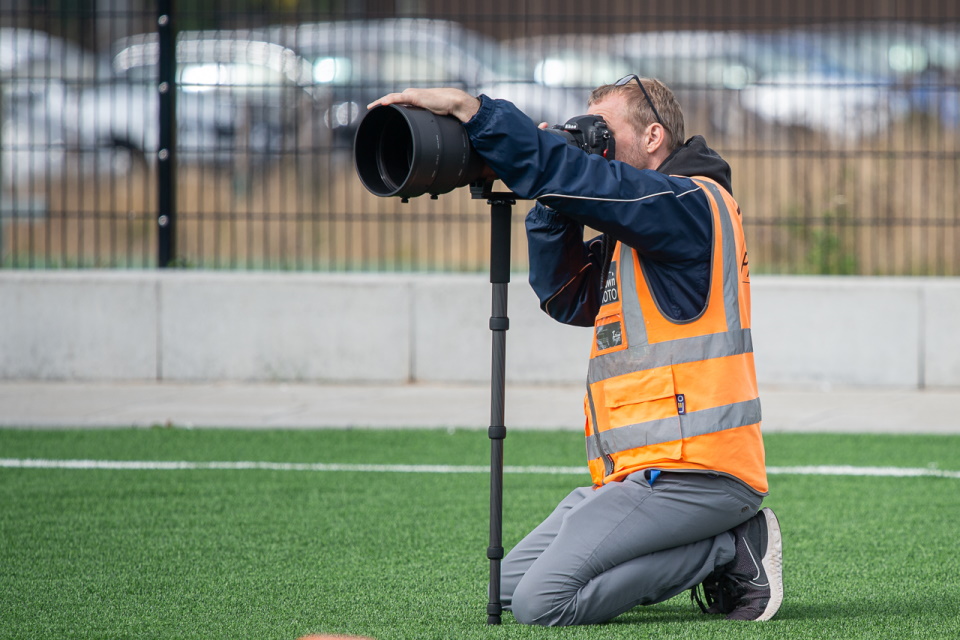
Photo: Fabian Rasmussen / @football.shooter.dk
AFI: What attracted you to American football?
MBR: I went to a small community college in Nebraska, USA in 1992 and my host family was made up of Denver Broncos fans. So, I got introduced to the sport a bit there, even though I was more into basketball at the time and found the rules of football very hard to grasp. In 1999 Atlanta Falcons kicker, fellow Dane, and now HoF’er, Morten Andersen made a game winning FG against Minnesota Vikings in overtime in the NFC Championship Game. Having a Dane in the Super Bowl for the first time led to a Danish TV channel broadcasting NFL games weekly from the 1999 season onward. That coincided with “The Greatest Show on Turf” (1999-2001 St. Louis Rams) turning heads in the NFL and from that moment I was completely sold on the sport (and on the Rams). I loved the glitter, the hits, the shifts in momentum, and the fact that basically any team could come back and win within the last two minutes of game. Games were exciting to the very end. And I still love that today.
AFI: When did you start photographing AF games?
MBR: I had shot a couple of games prior to 2015, but it really wasn’t until 2015 that I started being serious about my football photography. I started publishing pictures under the 1st Down Photo brand and received lots of positive feedback. I began studying the techniques of famous American football photographers from Sports Illustrated and such, upgraded my gear as the season progressed, and experimented with shooting positions around the field. It’s has been a journey ever since constantly learning and constantly trying out new things. The quest for the “perfect picture” never ends.
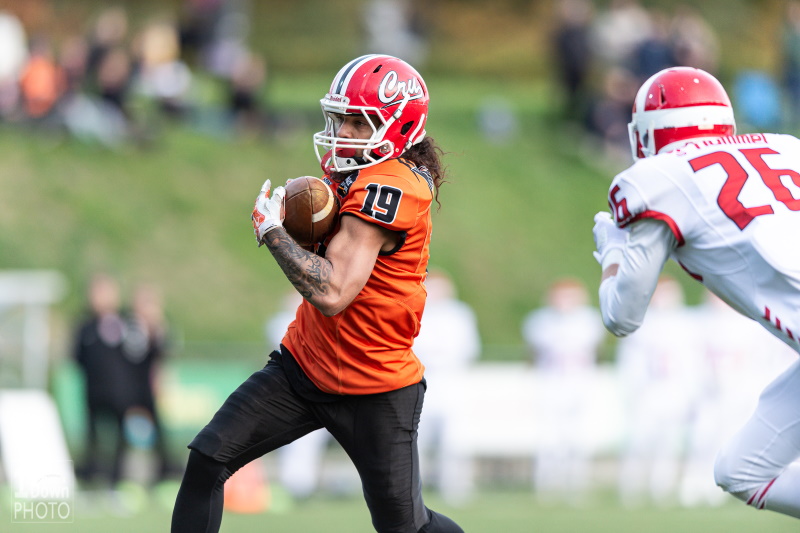
Team Netherlands WR Ashneil Wehlerman (19) catches a touchdown pass from Team Netherlands QB Tom van Duin (4) during the EC Qualifier Team Denmark vs Team Netherlands at Gentofte Stadion, Denmark, (2019-10-19). (Photo: Mikkel Bo Rasmussen / 1st Down Photo).
AFI: What kind of approach do you take when photographing AF games?
MBR: This is my eighth year shooting football and things have changed a bit from when I started. At first, all I was focused on was following the ball as it would surely lead to good action. But that does not necessarily lead to a good photograph. I was obsessed with capturing every touchdown. Over the years I have changed so I am now more willing to sacrifice capturing some of the scoring to get better pictures of the players. I might stay locked onto a lineman while the QB launches a bomb to a wide-open receiver down field. I might follow a safety roaming the deep zone instead of following the ball carrier. But in general, I look for peak action, crunch, and emotion. That is what football is all about to me.
I try to prepare for each game by looking at the roster for the game and sifting through previous games looking for key players to keep an eye on and judging what kind of an offense the teams rely on. A running back might be hurdling a lot, a safety might be good for a takeaway or two every game, or an O-lineman might be a pancake machine. I want to make sure I stay a bit extra on those guys improving my chances of getting a good photograph of good action. I usually focus on getting good images of the QBs and RBs during the first quarter, spend the second and third quarters trying to get good shots of other key players or positions, and then follow the action as the game climaxes in the fourth quarter. I also try to get reaction shots and shots of the fans in as well.
AFI: What does a typical game day look like for you?
MBR: Most games are either in my hometown or at most a one-hour drive away. I like to arrive no later than one-and-a-half hours before kick-off looking at the conditions and the light, greeting the officiating crew (whom I also make sure to take pictures of before and during the game), and shooting the team’s warmups. I need to mentally warm up as well and I particularly use this moment to get in sync with the timing of throws of the starting quarterbacks.
After the game I usually hang around a bit to chat with players, coaches, and other photographers. Having been at it for eight years means I know a lot of the people involved in the games both on and off the field. Getting home, I pack away the gear, recharge batteries for the next game, and copy the images to the computer. I try to get my pictures published online within a day or two after a game. Not being paid for what I do means I don’t have to stress about it, but I do want to get the pictures out while the games are fresh in peoples’ minds.
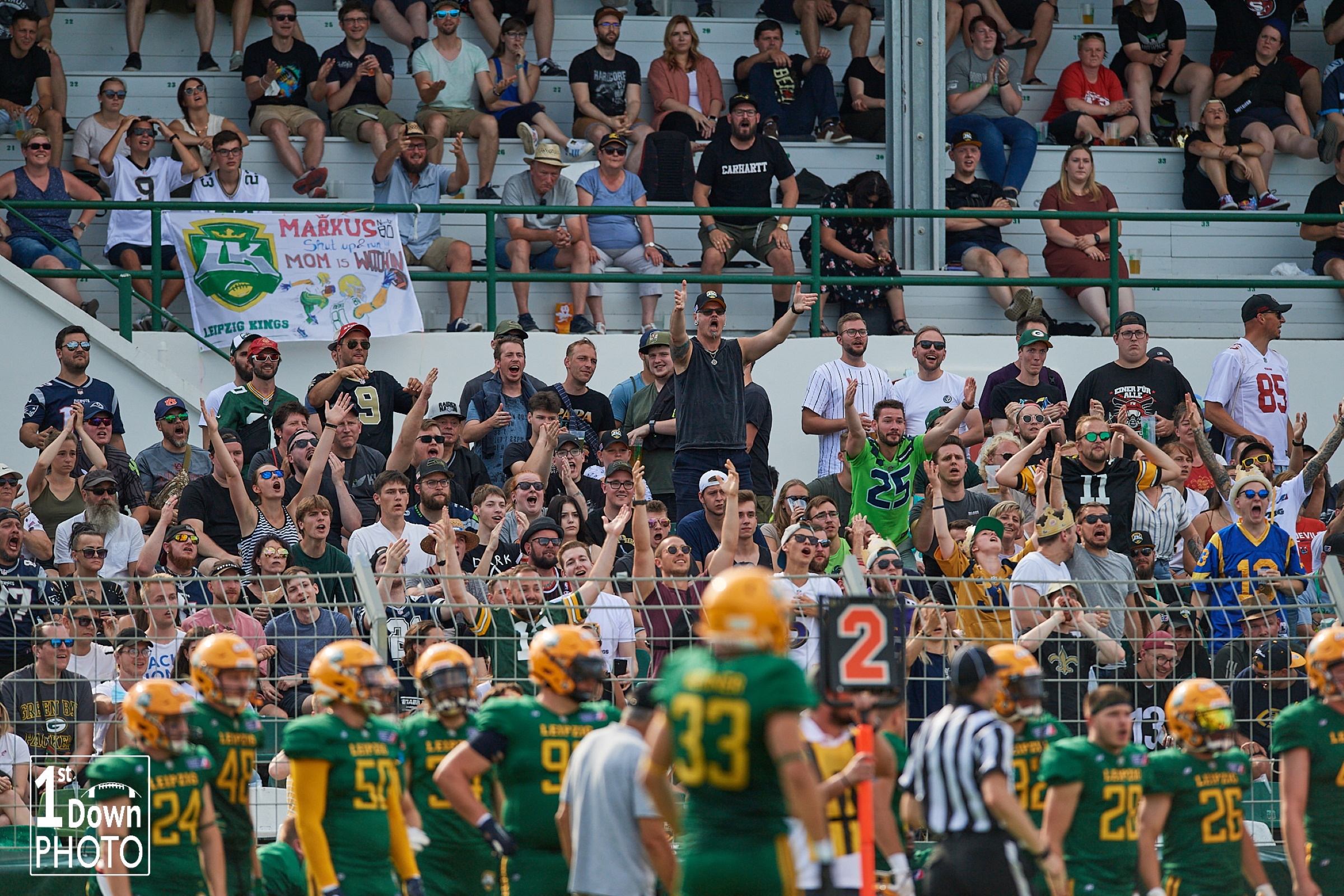
Leipzig fans appealing for a penalty against Hamburg Sea Devils during the third quarter of the ELF game Leipzig Kings vs. Hamburg Sea Devils at Alfred-Kunze-Sportpark, Leipzig, Germany, July 18, 2021. (Photo by Mikkel Bo Rasmussen / 1st Down Photo)
AFI: Photography has taken you traveling. What other countries have you visited to photograph games?
MBR: I have shot games in Sweden (IFAF European Championship game and IFAF Under-19 Nordic Championships), USA (an International Bowl IX game), and Germany (German Bowl 2019 in Frankfurt, ELF games in Hamburg and Leipzig, as well as the inaugural ELF Championship Game in Düsseldorf). UK is on my wish list as I hope to get to shoot an NFL game over there. I also would like to go back to the US to shoot a college game.
AFI: Tell us about a couple of memorable experiences you have had photographing games.
MBR: The first memory that comes to mind is my very first Danish American football championship game, Mermaid Bowl, in 2015. I had hoped I would be deemed good enough to get accredited, so I was stoked when I was told by DAFF I was allowed sideline access. It was my first time shooting a game at an actual stadium (as most games are played on grass fields at local schools). Everything was new and impressive, and I soaked it all in.
In 2018, I travelled to Dallas, Texas, to stay with a combined Nordic team for the International Bowl IX games. “Team Nordic” was to play a select Under-19 US team. Having the possibility to get a look behind the scenes at the practices, meetings, and events going on was super interesting. The actual game, shot at Dallas Cowboys AT&T Stadium, was a bit of a let-down as the US team outplayed Team Nordic big time and shooting at an empty stadium turned out to be a very strange experience. But I learned so much during that trip and met a lot of great people.
Closer to home, one of the most memorable experiences was when my local team, the Frederikssund Oaks, played a qualification game to advance to the highest league in Denmark in 2017. Not many people in the Danish football community had expected the Oaks to come out on top but supported by the entire length of the field of fans dressed in green, Oaks won 21-0 and moved up to the DAFF National League in 2018.
Being an outdoor sport, the weather often is a factor in football games. The 2017 Under-19 Nordic Championship game was played in Denmark and there was an actual cloudburst happening during the second half leaving parts of the field more or less under water. Passing the football was almost impossible, and even running the football was difficult with water spraying knee high at every step. I ended up sitting in the stands under the roof most of the second half protecting my gear from drowning.
In 2019, I was fortunate enough to shoot a couple of international games when Helsinki Roosters visited Copenhagen Towers and Badalona Dracs from Spain came to play the Triangle Razorbacks in Denmark. Both games were very entertaining and the Roosters – Towers game came down to the wire. One of my images from the Dracs – Razorbacks game ended up on the cover of the 2020 IAFOA Manual of Football Officiating.
I hope to build on these memories by getting a chance to shoot an NFL game at some point in time. Either in Germany, the UK, or the US. Stay tuned!
Other random facts
- On average I shoot about 2,500 pictures per game.
- I have shot a little over 200 games including scrimmages and youth meets.
- Most points in a game I have shot: 128 in AaB 89ers at Søllerød Gold Diggers, 2019-05-04.
